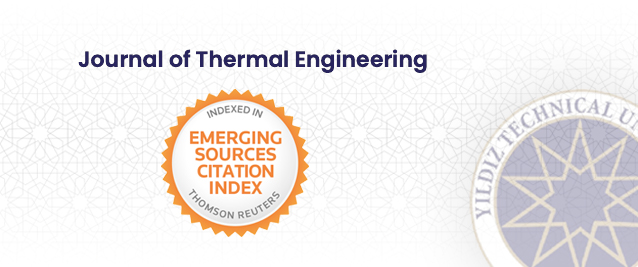2Department of Mechanical Engineering, Al-Nahrain University, Baghdad, Iraq
3Department of Mechanical Engineering, Mustansiriyah University, Baghdad, Iraq
4Training and Workshop Center, University of Technology – Iraq, Baghdad, Iraq
Abstract
A numerical simulation study was carried out to investigate a steady two-dimensional laminar natural convective heat transfer from a uniformly heated inner circular cylinder placed inside an air-filled square enclosure with a porous material. The enclosure’s side and upper walls were isothermal, while the bottom wall was adiabatic. All the numerical calculations were performed in the range of Rayleigh numbers between 103 and 107. The material porosity (ε), the solid to fluid thermal conductivity ratio (kr), and Darcy number in the present study were 1.0, 0.5, and 0.01, respectively. The results showed that for Rayleigh numbers that are less than 106, the isotherms are almost parallel inside the three cold walls except for the corners of the adiabatic bottom wall. The rates of vertical velocity are higher than the horizontal velocity, especially at higher Grashof numbers. Also, the use of fibrous porous material with low thermal conductivity relative to the fluid thermal conductivity reduces the values of average Nusselt number, in addition to reducing the horizontal and vertical velocities along the horizontal axis.























